Metrotile Introduces Vent Tiles For Its Metal Tile
NZMRM has long been promoting the need to ventilate roof spaces under metal roofs, to avoid moisture problems caused when moisture vapour passing from the house into the roof space cannot escape. Stuart Thomson has discussed this in detail in his recent series of Scope articles. NZMRM with BRANZ has investigated a number of roofs with supposed leaking problems which turned out to be caused by moisture from the house being unable to be removed by the ventilation available naturally in the roof.
It has been obvious that for many roof designs and environmental conditions some form of additional ventilation is needed over and above that created by the inherent shape, pitch or design of the roof, and discussions are ongoing about the amount of ventilation and the way to provide it.
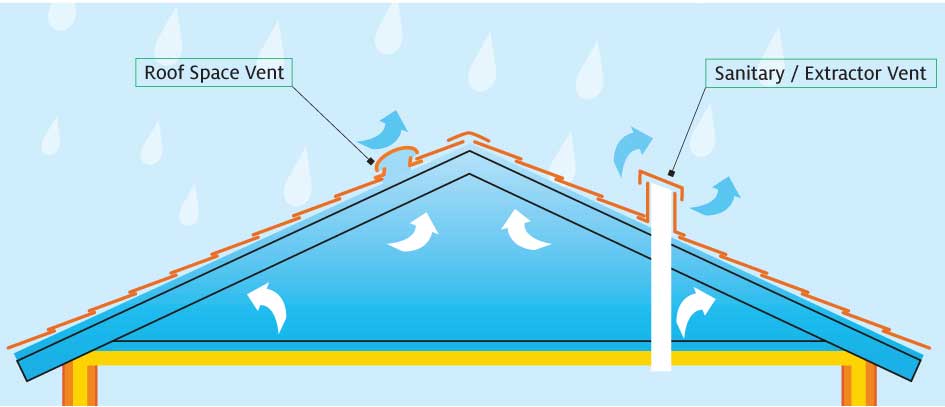
Recent changes to E3/AS1 now allow roof space ventilation and we have been discussing with a number of interested parties how to achieve adequate levels of ventilation and what these levels are for different roof constructions and local temperature / humidity conditions.We have also been investigating products designed to create acceptable levels of ventilation under metal roofs.
Most of our discussions and recommendations have revolved around profiled metal roofing (longrun) which has no inherent ventilation by air leakage other than up the roof profile, and we have tended to consider that metal tile roofs provide enough self-ventilation by means of the “trickle” ventilation provided by the very small spaces between the tiles, but this is not necessarily true in all cases of design and environment.
Now Metrotile add a new-to-New Zealand method for ventilating metal tile roofs, which are used in Europe.
The builders and designers of houses in Northern Europe, where tile house roofs are almost universal, and where tiles are also used for many commercial applications where we would use longrun, are well aware of this. The issues we have only recently realised in New Zealand, of closed in air-tight houses and cold and humid weather conditions have long been common knowledge in Europe. These conditions can create serious moisture problems with attendant damage and health issues caused by mould and damp. In Northern Europe it is common to install multiple vents in the roof to allow the escape of roof-space moisture and also as a means of venting sanitary and other extraction systems directly into the air flow above the roof.
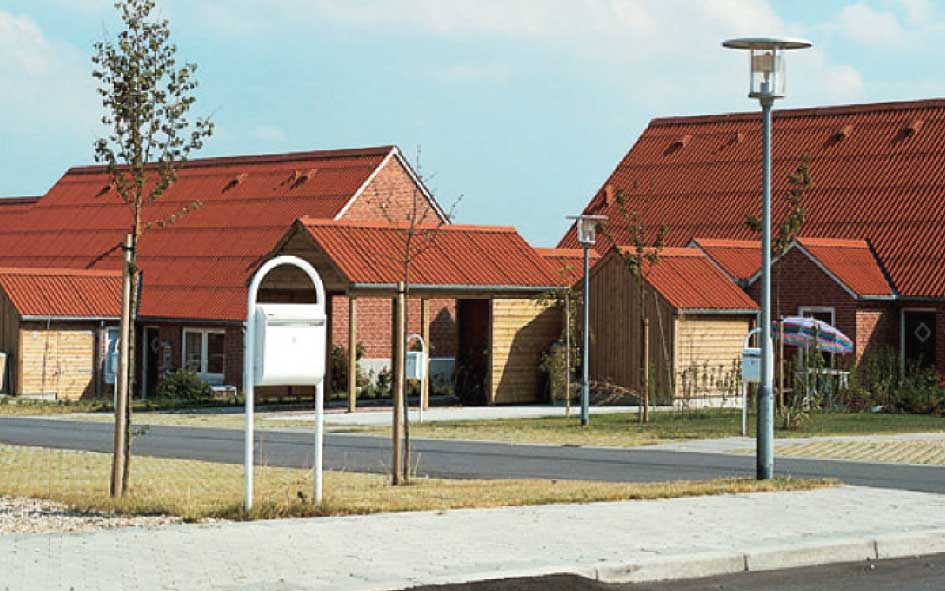 Visitors to Germany and Scandinavia will have seen roofs like this one, on a shopping centre in Denmark, with a row of “mushrooms” close to the ridge line. These are in fact ventilators used to vent moisture from the roof space, and also to cap vent pipes from inside the building. These replace our more familiar pipes and “boot flashings” and are certainly more aesthetic
Visitors to Germany and Scandinavia will have seen roofs like this one, on a shopping centre in Denmark, with a row of “mushrooms” close to the ridge line. These are in fact ventilators used to vent moisture from the roof space, and also to cap vent pipes from inside the building. These replace our more familiar pipes and “boot flashings” and are certainly more aesthetic
ally pleasing. Tile roofed buildings in Northern Europe, where diurnal temperature variation and humidity are similar to or worse than those experienced in areas of New Zealand where we have had moisture problems, can nearly all be seen sprouting various designs of such vents, and they are also seen on roofs clad with other materials. Metrotile have used these on roofs supplied into Europe.
A leading supplier of these products is J.A. Plast Industri in Denmark which makes a range of products for ventilation, 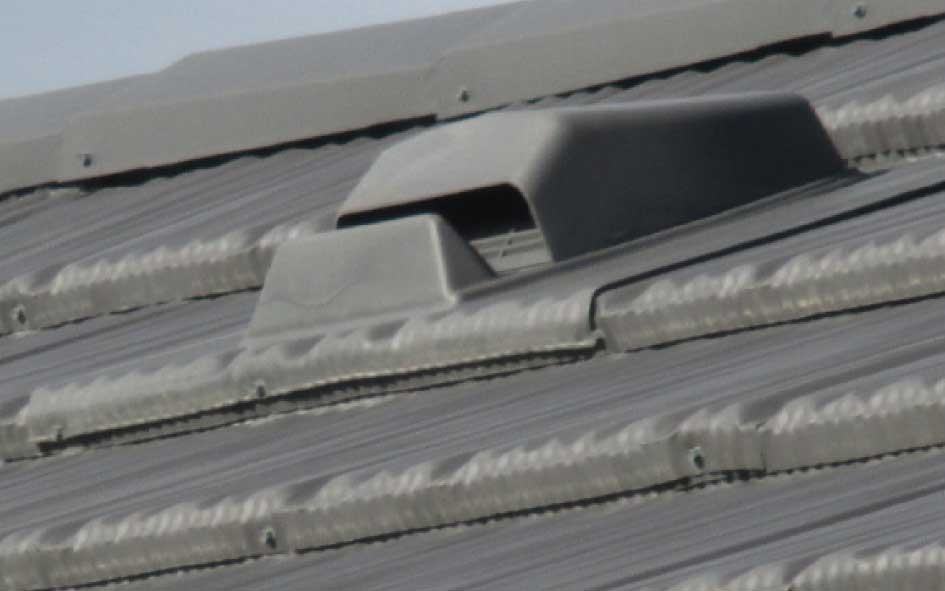 of these “mushroom” type and a number of others for all types and finishes of roof.
of these “mushroom” type and a number of others for all types and finishes of roof.
Of course these products are designed to be used with air access at the eaves; products also supplied by J.A. Plast, and are designed to be weatherproof under all conditions of rain wind and snow.
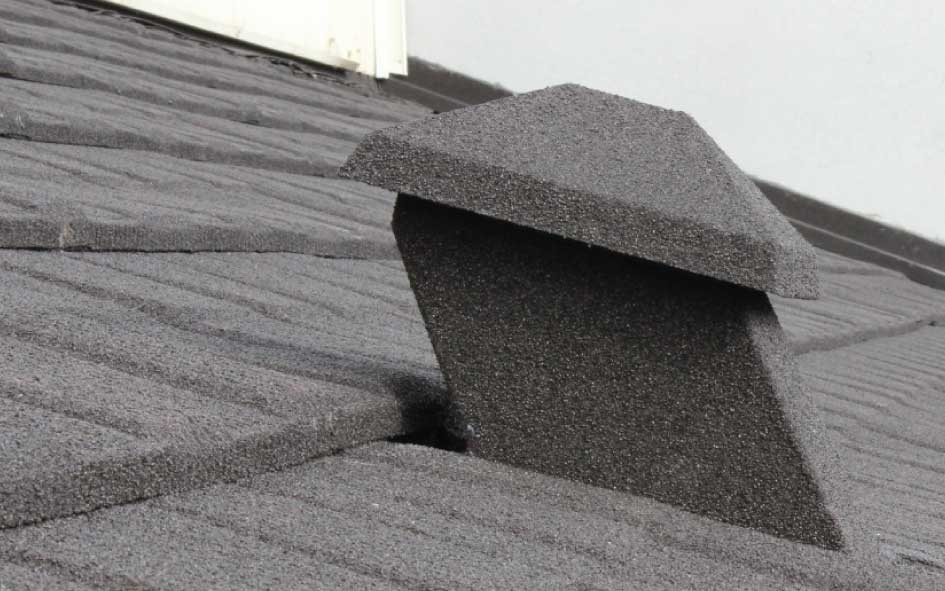 Now Metrotile in New Zealand announces it is to supply J.A. Plast vent tiles to go with its metal tile roofs in New Zealand. These will be of two types – one to ventilate the roof space and allow air introduced at the eave to escape carrying with it moisture which can otherwise cause “leaking” issues. The other is a sanitary vent cap which allows vent pipes from toilets and also from bathrooms, laundries and kitchens to exit straight up and out of the roof where natural air movement is at a maximum, to remove steam etc with no mechanical ventilation or less than required with the common horizontal venting.
Now Metrotile in New Zealand announces it is to supply J.A. Plast vent tiles to go with its metal tile roofs in New Zealand. These will be of two types – one to ventilate the roof space and allow air introduced at the eave to escape carrying with it moisture which can otherwise cause “leaking” issues. The other is a sanitary vent cap which allows vent pipes from toilets and also from bathrooms, laundries and kitchens to exit straight up and out of the roof where natural air movement is at a maximum, to remove steam etc with no mechanical ventilation or less than required with the common horizontal venting.
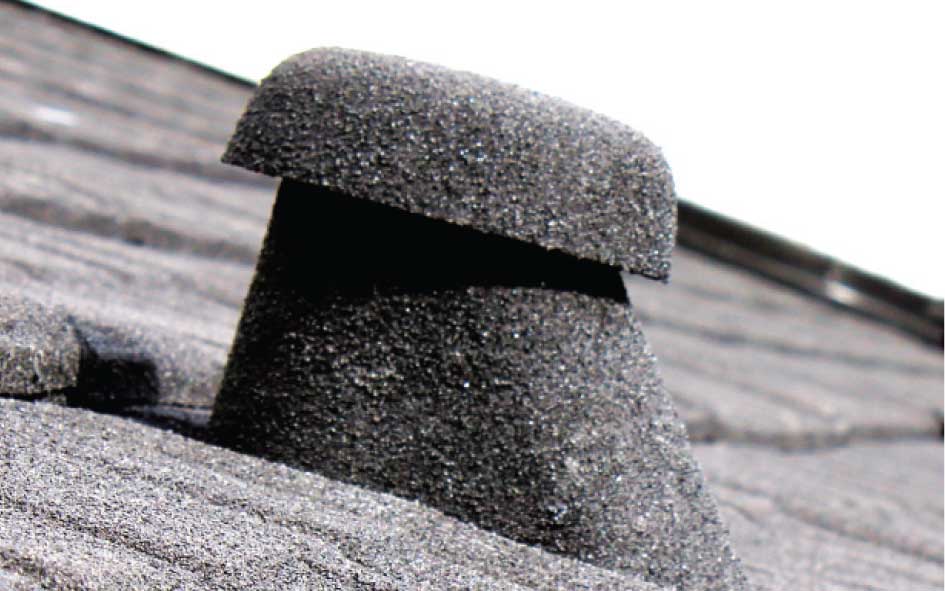
These blend in naturally with the roof,
instead of an intrusive and obvious pipe through a boot flashing. The vents are made as part of a single tile and are fitted into the roof without the need to cut any penetrations.
Comments from the builder and roofer of the house above, David Read Homes and Hain Sinclair Roofing –
• “They look smart and blend in with the surrounding roof as they are the same style and coated with the same finish as the tiles”
• “They allow me to provide ventilation to remove moisture from the roof space and places where it is created in the house such as the bathroom, laundry and kitchen, to comply with E3”
• “They can be installed at the same time as the tiles and don’t require cutting any holes in the roof”
• “They are available to suit all Metrotile profiles”
To take advantage of these benefits and for further information see
Metrotile at www.metrotile.com and
J.A. Plast Industri at www.japlast.com
Roofing Company:
Hain Sinclair Roofing
Hain Sinclair
Email : hain.sinclairroofing@gmail.com
Telephone: 021 582444
Builder:
